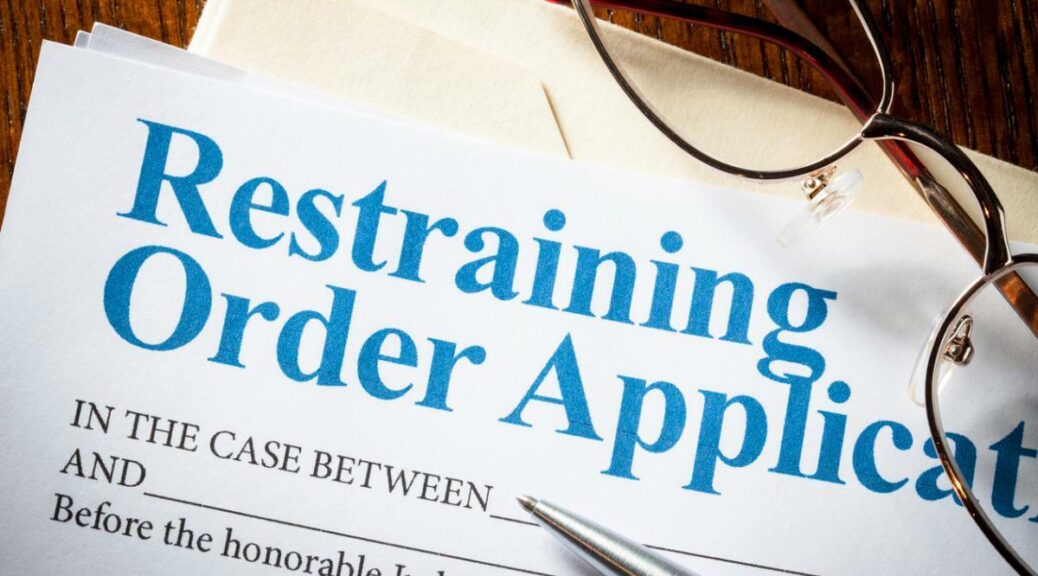A Domestic Violence Restraining Order provides significant legal protections for you and your children. These legal orders are specifically for people with whom you have had a close relationship, including family, in-laws, current or former dating partners, current or former spouses, and others.
Filing for a domestic violence restraining order against someone is a big step that should be considered carefully. It is often an emotional and traumatic time, and numerous factors and circumstances can cloud your thinking. How do you know when it’s time to obtain legal protection? Or, how far is too far when considering a domestic violence restraining order?
Defining Domestic Violence
The United States Department of Justice defines domestic violence as follows:
“Domestic violence is a pattern of abusive behavior in any relationship that is used by one partner to gain or maintain power and control over another intimate partner. Domestic violence can be physical, sexual, emotional, economic, psychological, or technological actions or threats of actions or other patterns of coercive behavior that influence another person within an intimate partner relationship. This includes any behaviors that intimidate, manipulate, humiliate, isolate, frighten, terrorize, coerce, threaten, blame, hurt, injure, or wound someone.”
Accordingly, you should consider a domestic violence restraining order when you are subjected to behaviors that:
- Intimidate
- Manipulate
- Humiliate
- Isolate
- Frighten
- Terrorize
- Coerce
- Threaten
- Blame
- Hurt
- Injure
- Wound
Such behavior toward you or your children is sufficient grounds for filing to obtain an order of protection. However, keep in mind that the court will need proof that some sort of threatening behavior has affected or is likely to affect you and/or your children.
How Far Is Too Far?
Asking, “How far is too far?” or “How much should I put up with?” before considering a domestic violence restraining order is not necessarily the right question. When you or your child experience abuse or feel threatened, that is the time to act. Contact The Law Offices of Judy L. Burger for immediate assistance with obtaining a restraining order.
You can also get immediate assistance by calling the National Domestic Violence Hotline at 1-800-799-7233.
How to File for a Domestic Violence Restraining Order
Certified CA Family Law Specialist Judy Burger can walk with you through the difficult circumstances that prompt filing for a domestic violence restraining order in California. She will help you construct the necessary petition to present to the court. Imagine drawing a blueprint for a court testimony – your petition should contain similar elements, including:
- Specific details of the threats or abuse to you or your child. Record all the dates, locations, and other facts you can remember.
- Evidence that backs up your petition, like emails, texts, pictures, social media posts, damaged property, or physical marks on your/your child’s body.
- Witness or expert statements that back your petition, like doctor’s notes, photos, witness testimonies, and more, in written or digital media.
- Ask for what kind of help you need. What do you need the order to accomplish? Stop the abuse, prohibit contact, protect your children, provide support, or other measures.
File the Petition
Turn in your request to the court. A judge may also grant you an ex parte (emergency) hearing and order of protection in certain circumstances.
Serve Notice
The party from whom you seek protection will be served an official notice of the pending court action and any ex parte orders against them.
Appear in Court
You and the other party appear in court to present your cases to a family law judge. He or she will issue orders accordingly.
Get Help from a Certified Family Law Specialist
Attorney Judy Burger can help you more in a confidential consultation. She knows how to take immediate steps to protect you and your privacy and can offer more guidance about what you should do next. Contact The Law Offices of Judy L. Burger at the location nearest you in North, Central, and Southern California to get the help you need to stop the abuse.





